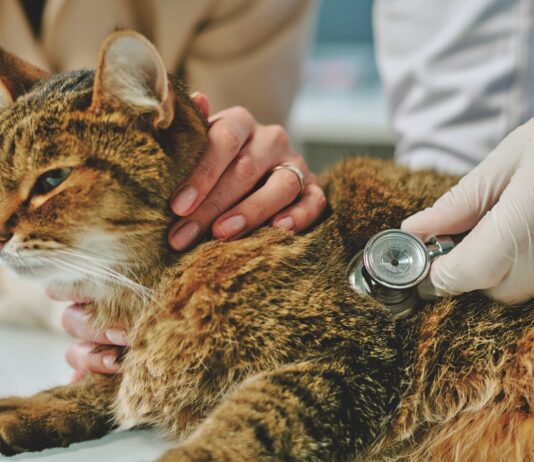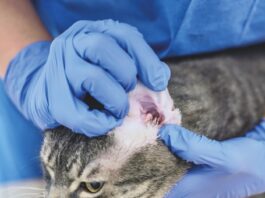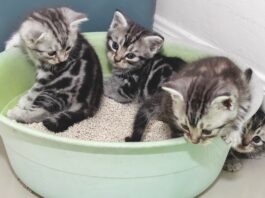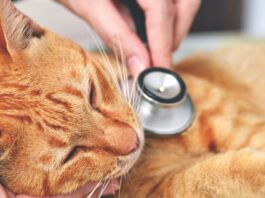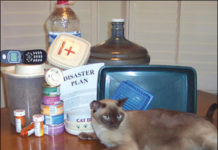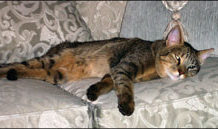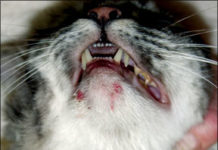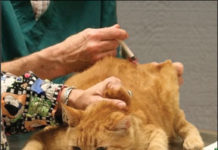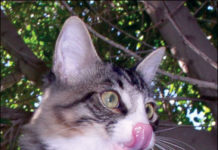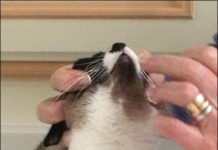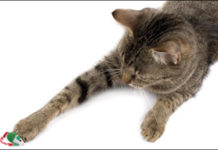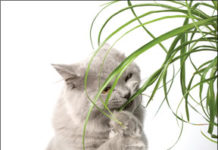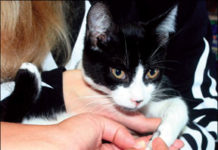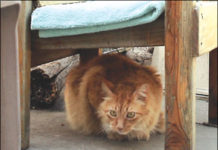Pet Owner Fire Safety Tips
When an out-of-control firestorm raced through the hills above Santa Barbara, California, last fall, frantic residents had little time to grab a few belongings and flee. "My wife and I were able to safely evacuate with our dogs and one of our cats," remembers Jason Bryan, a resident of Montecito, a tiny enclave of Santa Barbara. "Unfortunately, our other cat, Sunny, is adept at hiding, and we couldnt find him before we had to leave. For days, the Bryans lived in a cramped motel room and were forced to wait and wonder whether their house - and beloved cat - had survived the flames. On the fourth day, they were allowed to return to their burned out neighborhood. "Miraculously, our house was still standing," says Marian, Jasons wife. "And best of all, we found Sunny inside, hungry and lonely, but alive. We feel truly blessed." Some were not as fortunate as the Bryans. Sabrina Robinson was just finishing up her workday at a medical supply company when the fire broke out shortly before 6:00 pm on that fateful day. She wasnt aware of the imminent danger until she stepped outside and smelled the acrid smell of smoke.
Short Takes: 04/09
What once was termed "renal failure" is now called feline chronic kidney disease (CKD), in part because the word "failure" sounded too terminal: Many cats live on for years (with treatment) with chronic kidney disease. One such survivor was the first ShortTakes office manager, the late, great Gertie. That stalwart kitty was diagnosed with renal failure in "middle age," around 11 years old. She hung on to see her 20th birthday - a little shaky toward the end - but mostly thriving with good "quality of life" thanks to expert veterinary care, therapeutic renal diets, blood pressure medicine for her hypertension, and plenty of fresh water for the thirst that goes along with kidney disease.
Acne: All Cats Are at Risk
Despite its typical durability, a cats skin is subject to a wide array of disorders. Most of these conditions, in themselves, are of minor consequence and readily treatable. But all of them merit examination by a veterinarian, since they can signal the presence of a serious infection or other potentially life threatening systemic health problem. Among the various feline skin conditions that might be overlooked - or ignored - by an owner is acne. This disorder, characterized by the emergence of tiny black eruptions (blackheads) on a cats chin and lips, is a condition that can afflict both male and female cats of all ages and breeds. The presence of blackheads usually amounts to nothing more than a cosmetic problem, says William H. Miller, Jr., VMD, a professor of dermatology and medical director of the Companion Animal Hospital at Cornell Universitys College of Veterinary Medicine. However, he points out, feline acne - which appears only on an affected cats face - can evolve into a serious health issue if the benign blackheads turn into pus-filled boils (furuncles) that may signal the presence of a deep-seated bacterial or fungal infection.
When to Vaccinate Your Cat
During the past half-century, no fewer than 10 vaccines have been developed that, according to their manufacturers, can protect your cat against a wide variety of lethal feline diseases. In general, these claims of efficacy have been justified. According to Fred Scott, DVM, PhD, professor emeritus of virology at Cornell Universitys College of Veterinary Medicine and the founding director of the Cornell Feline Health Center, the vaccines have been responsible for "a tremendous improvement in feline health." He cites as a prime example the vaccine created to protect against the feline panleukopenia virus (FPV). "Prior to the late 1960s and early 1970s," says Dr. Scott, "half of all cats that passed through a shelter developed panleukopenia within a few days - and as many as 90 percent of them died from it. Today, the FPV vaccine has totally controlled the disease in properly vaccinated cats. The only time you see it now is in unvaccinated feral or farm cats or those that are in shelters, but that is rare." However, he points out, there are several reasons why owners should refrain from having their cats inoculated annually with every available vaccine. For example, it is remotely possible for a vaccine to damage a developing fetus or stimulate an allergic reaction. And of growing concern is the development of vaccine-associated sarcoma - a type of cancer that, for unknown reasons, emerges at the site on a cats body where a vaccine has been injected. Furthermore, research has brought into question the need for all cats to be routinely revaccinated with all available vaccines every year throughout their lives. Certain laboratory tests may reveal that, as the result of a previous vaccination or natural exposure to an infectious agent, the antibody levels in a cats blood remain high enough to protect it against a specific virus or bacterium. In that case, the animal would be protected against disease associated with that infectious agent and a booster shot would be unnecessary.
Ask Elizabeth: 03/09
My cat, Nickel, meowed at the door to be let in this afternoon, as she always does after her outdoor adventures. Today was different, though, because when I went to the door to let her in she was sitting next to a dead crow. I dont know if she killed the crow, or if she found it dead and brought it for me to admire. Regardless, my first thought was of West Nile Virus. Can you tell me if cats can catch West Nile Virus from crows (dead or alive)? If they can catch the virus, are they able to pass it to humans?
Feline Asthma: A Risky Business For Many Cats
More than 80 million cats currently live in American homes, and veterinary epidemiologists estimate that 800,000 or more of these animals - one percent or so of the nations domestic feline population - suffer from acute or chronic asthma. Although this condition - the most commonly diagnosed respiratory disorder in cats - is incurable, veterinary researchers are making progress in understanding its causes and devising methods for its effective treatment. Richard Goldstein, DVM, associate professor of small animal medicine at Cornell Universitys College of Veterinary Medicine, describes asthma as a constriction of the airways, or bronchi, the two narrow tubes that lead directly from the trachea to the lungs. The narrowing of the airways occurs when a cats immune system overreacts to the presence of an allergen and responds by releasing stimulants that cause inflammation and swelling of the sensitive tissue lining the bronchi and contraction of the surrounding muscle. This results in the narrowing of the airway and causes breathing difficulty (dyspnea), especially when exhaling. While specific asthma-causing agents typically remain unidentified, suspected allergens include tobacco smoke, dusty kitty litter; vapors from household cleaning solutions and aerosol sprays; pollen from trees, weeds and grass; mold and mildew; dust mites; smoke from fireplaces and candles; and even some foods.
Medicating Your Cat
For many pet owners, the realization that a cat will require medicating - even for just a few days - is enough to cause serious apprehension. Though some felines are extraordinarily good when it comes taking their medicine, others are not. Cats can be notoriously difficult to capture, restrain and medicate; however, with the following expert tips, medicating a cat can be much less stressful - for both cat and owner. "One of the biggest stumbling blocks for cat owners is the mindset with which they approach medicating their cats," explains Jodi Korich, DVM, the director of Partners in Animal Health at Cornell Universitys College of Veterinary Medicine. If you are nervous about medicating your cat or perhaps youre feeling incredibly worried because your kitty is ill, your cat will pick up on this. "You have to approach medicating your cat with the mindset that you are doing this for the cats own good, working calmly, quickly and not obsessing over the process," recommends Dr. Korich. A positive, confident approach may make your cat feel more secure.
Help for the Choking Cat
Cats are known to be fastidiously discriminating in their eating behavior. Compared to dogs, they are extremely cautious about what they take into their mouths. Owing to their finicky habits, a cat is unlikely to ingest anything that could cause it to choke. But accidents do happen. A cats environment is full of countless little objects, from sticks, stones and rodent bones - to thimbles, buttons, rubber bands and strands of yarn. If a cat inadvertently takes such a foreign object into its mouth, is not immediately able to disgorge it and attempts to swallow it, the animals upper respiratory apparatus can become blocked and its oxygen supply can become seriously diminished or totally impeded. Oxygen deprivation can cause death within a matter of minutes. Therefore, any signs of choking must be viewed as an emergency situation requiring immediate attention. However, says Gretchen Schoeffler, DVM, chief of emergency and critical care services at the Cornell University Hospital for Animals, veterinarians rarely treat cases of feline choking. This is because such traumatic events tend to be either (1) self-limiting; (2) relieved thanks to prompt action by an affected animals owner; or (3) fatal before veterinary help can be obtained.
Short Takes
A study in the Journal of the American Veterinary Medical Association (Vol. 234, No. 2) found that some dietary supplements dont dissolve fast enough to be absorbed by cats and dogs. The report was titled "Composition, disintegrative properties, and labeling compliance of commercially available taurine and carnitine dietary products" and said that two out of three (labeling and composition) were adequate. Researchers concluded: "Taurine and carnitine products evaluated in this study closely adhered to manufacturer claims and labeling guidelines. However, disintegration testing suggested high variability in some products, possibly limiting uptake and use by animals that receive them."
Feline Blood Disorders
The principal function of feline blood, like that of human blood, is to transport oxygen and nutrients throughout a cats body tissues and to carry carbon dioxide and various waste materials away from them. But this is by no means the only vitally necessary role that this rich, red fluid plays. Typically accounting for five percent or so of a cats total body weight, the blood is a key contributor to many other processes, such as cell development, tissue repair and the warding off of infection. The components of a cats blood are virtually identical to those of human blood, notes Marjory Brooks, DVM, associate director of the Comparative Coagulation Laboratory at Cornell Universitys College of Veterinary Medicine. These components include red cells (erythrocytes), which are critical for oxygen delivery and also assist in the removal of toxic carbon dioxide; white cells (leukocytes), which help protect an animal against infection and parasitic disease; platelets, which promote clotting and wound healing; and a colorless fluid (plasma) in which these and other life-supporting blood components - such as hormones, proteins and salts - are suspended. Disorders directly associated with blood abnormalities may not be as easily recognized by owners as other feline diseases. That does not mean that they are necessarily less serious. On the contrary, says Dr. Brooks, the diagnosis of various feline blood disorders - including low platelet counts, low red cell counts, high white cell counts, clotting problems, blood-related cancers and even blood poisonings - are a common occurrence at the Cornell University Hospital for Animals (CUHA). And the diagnosis of one of these disorders - feline anemia - is apt to occur "weekly, at least," she says.
Epilepsy: Always Alarming
Whether happily playing with its favorite toy, vigorously pursuing a tiny mouse, or frantically fleeing from a mean-spirited predator, all of your cats activities rely on the controlled transmission of electrical signals among the billions of nerve cells (neurons) that are jammed into its little brain. In a normal cat, the transmission - or firing - of these signals is well controlled within the central nervous system. These neurons either fire or are inhibited from firing according to an animals shifting needs and desires. In the brains of cats affected with the disorder known as epilepsy, however, this elegant process goes awry. As Alexander de Lahunta, James Law Professor Emeritus of Anatomy at the Cornell Universitys College of Veterinary Medicine, explains: "Neurons are made to fire, so until the transmission of electrical signals is needed, they are kept in a static, inhibited state. If something interferes with that inhibition, an uncontrolled firing of neurons can occur - and that is the phenomenon commonly referred to as a seizure." Dr. de Lahunta describes the "classic" seizure as follows: "The animal suddenly begins to alter its behavior. It acts warily, as if it senses that something unusual is about to happen. It gets very tense, its muscles contract, causing stiffness and trembling. It begins to chew and to drip saliva, even though there is nothing in its mouth. Then the animal becomes increasingly rigid, falls to one side with its limbs extended, and starts paddling them. "Meanwhile, the cats entire body starts shaking - and at this stage, it may stop breathing for as long as 30 or 40 seconds. And then, the panting and shaking and everything else begins to slow down - and within a few minutes, the animal seems to be normal again."
Is it Urinary Incontinence or Urine Marking?
When a cat begins soiling the house, it is usually assumed that it is a behavioral problem or the onset of senility. However, there are several medical conditions that can cause urinary incontinence and inappropriate urination, some of which require immediate treatment. First, it is important to distinguish between incontinence and inappropriate urination. True incontinence occurs when a cat does not have voluntary control over urination; trauma, a weak primary sphincter muscle and congenital abnormalities are the most common causes of incontinence. Inappropriate urination is much more common than true incontinence; this may be a behavioral problem or it may be the result of an underlying medical condition. The most common medical cause of inappropriate urination is inflammation of the urinary bladder. While the root causes often vary significantly, the signs - called lower urinary tract signs or LUTS - are similar: frequent urination, excessive licking of the genital area and difficult or painful urination. The actual diagnosis can range from a urinary tract infection to urethral blockage. It is extremely important to seek veterinary care if your cat exhibits these signs - do not assume that the animal is simply constipated. If he is suffering from urethral blockage, he may lose consciousness and die within a day or two of complete blockage. On the other hand, it may turn out to be something as treatable as a urinary tract infection. To begin with, your veterinarian may ask several questions...

